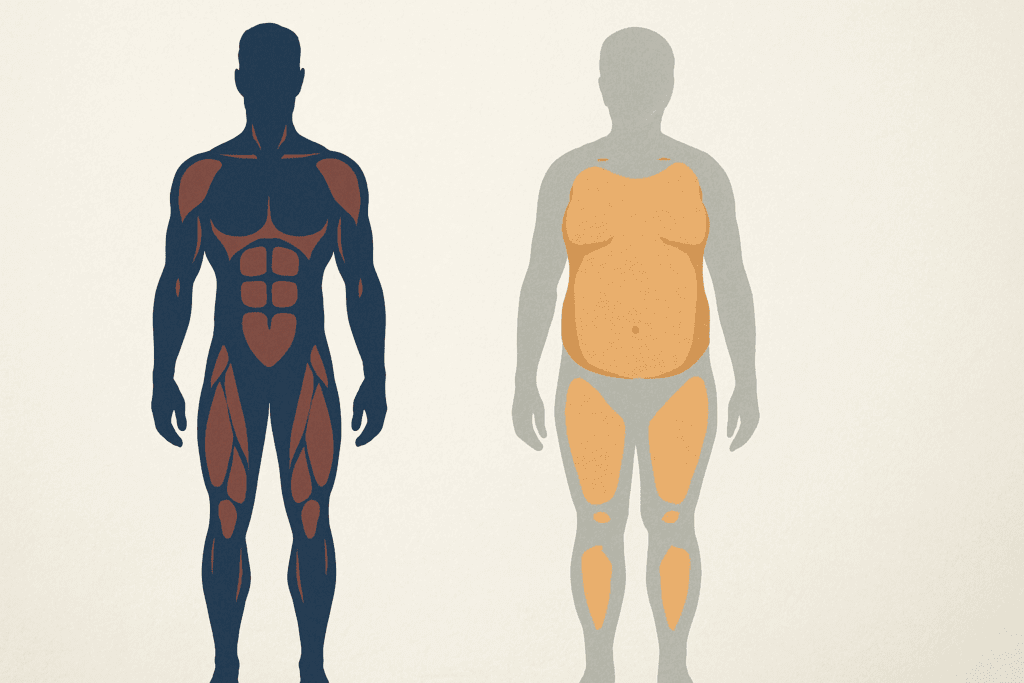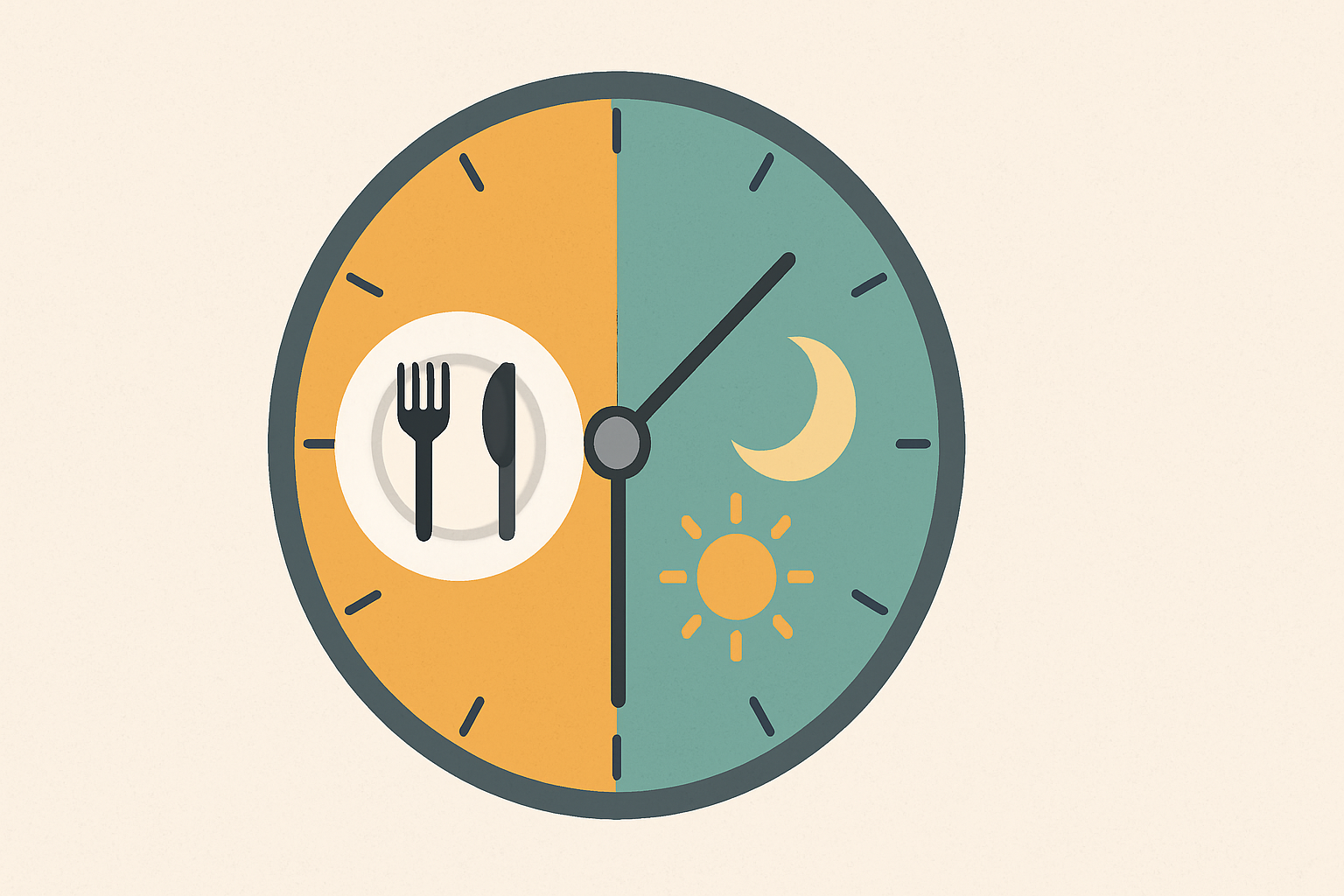Introduction: Why Weight Loss After 60 Requires a Different Approach
Losing weight after 60 can feel like an uphill battle, especially when the body begins to shift in ways that make traditional methods less effective. Metabolism slows, lean muscle mass declines, and hormonal changes begin to influence how fat is stored. But age should never be viewed as a barrier to wellness. Instead, it should be seen as a stage in life where strategy, knowledge, and self-compassion take precedence over quick fixes. Learning how to lose weight after 60 involves a thoughtful, evidence-based approach that considers the unique physiological and lifestyle needs of older adults. With expert-backed guidance and practical nutritional and lifestyle strategies, it is not only possible to achieve weight loss for over 60, but to do so safely, sustainably, and in a way that supports overall vitality.
You may also like: Expert-Backed Weight Loss Tips for a Healthier Lifestyle: What You Need to Know for Long-Term Weight Control and Wellness

Understanding the Metabolic and Hormonal Shifts of Aging
One of the most misunderstood aspects of losing weight after 60 is the assumption that eating less and exercising more is all it takes. While caloric balance is indeed important, the story is far more nuanced for individuals in their 60s and beyond. Muscle mass decreases with age, and this reduction contributes significantly to a slower resting metabolic rate. Consequently, the body burns fewer calories at rest than it did in one’s younger years. Hormonal shifts, particularly in postmenopausal women and aging men with declining testosterone levels, further complicate how fat is distributed and retained. Understanding this physiological foundation is critical in setting realistic goals and tailoring a weight loss plan that aligns with the body’s new normal.

Prioritizing Nutrient Density Over Caloric Restriction
It is also essential to recognize that restrictive diets, which may have once worked in youth, are not only ineffective but potentially dangerous in older adulthood. Very low-calorie diets can lead to nutrient deficiencies, muscle loss, and increased frailty. Instead, a focus on nutrient density becomes paramount. This means choosing foods rich in vitamins, minerals, fiber, and healthy fats without excessive calories. Think leafy greens, colorful vegetables, legumes, nuts, seeds, lean proteins, and whole grains. Nutrition for older adults must also support bone health, cardiovascular function, and blood sugar stability—all critical concerns that intersect directly with sustainable weight loss for over 60.
The Role of Protein in Preserving Lean Muscle Mass
Protein intake deserves special attention for anyone over 60 attempting to lose weight. As muscle mass naturally declines with age, maintaining and building lean tissue becomes more difficult. Protein is the foundation for muscle repair and preservation, especially in the context of calorie reduction. Studies have shown that older adults need more protein per kilogram of body weight than their younger counterparts. Incorporating high-quality protein sources such as fish, poultry, eggs, Greek yogurt, tofu, lentils, and cottage cheese into every meal helps to stimulate muscle protein synthesis and prevent sarcopenia, a condition characterized by muscle loss and weakness.
Hydration: A Simple Yet Crucial Weight Loss Tool
Hydration, often overlooked, is another key factor in losing weight after 60. As we age, our sense of thirst becomes less reliable, increasing the risk of dehydration, which can impair digestion, metabolism, and even cognitive function. Older adults should be intentional about water intake, aiming for around 8-10 cups per day unless otherwise advised by a healthcare provider. Drinking a glass of water before meals may also help with appetite regulation, reducing the likelihood of overeating. Herbal teas, broths, and water-rich fruits and vegetables such as cucumbers, oranges, and melons can also contribute to overall hydration goals.
Tailoring Physical Activity to Meet Aging Needs
Exercise remains a cornerstone of any weight loss plan, but the type and intensity should be tailored to meet the specific needs and physical capabilities of adults over 60. Gone are the days when high-intensity interval training was the universal solution. For many older adults, low-impact activities that promote consistency and joint safety are more effective. Walking, swimming, and cycling offer cardiovascular benefits without excessive strain. Strength training, ideally two to three times per week, is critical for preserving muscle mass and improving bone density. Incorporating balance and flexibility exercises, such as yoga or tai chi, can further reduce fall risk and improve mobility, which supports long-term adherence to physical activity.
Addressing Emotional and Psychological Factors
Beyond physical considerations, mindset plays a pivotal role in how to lose weight after 60. Older adults often face emotional challenges such as loneliness, grief, or a sense of decreased purpose, which can influence eating behaviors. Emotional eating, boredom snacking, or relying on food for comfort can undermine even the most well-structured diet. Developing awareness around emotional triggers and building coping strategies through mindfulness, journaling, or engaging in social activities can help reframe the role food plays in one’s life. Working with a therapist or registered dietitian with experience in behavioral nutrition can also provide the necessary tools for long-term success.

The Overlooked Link Between Sleep and Weight
Sleep quality is another often underestimated factor in weight regulation, particularly in older adults. Hormonal regulation of hunger and satiety—via ghrelin and leptin—is disrupted by insufficient sleep. This can lead to increased cravings, particularly for high-carbohydrate and sugary foods, which are less satisfying and more calorie-dense. Adults over 60 often experience changes in sleep architecture, including lighter and shorter sleep cycles. Prioritizing sleep hygiene practices such as maintaining a regular bedtime, limiting screen time before sleep, managing nighttime light exposure, and reducing caffeine or alcohol intake can improve both sleep quality and weight outcomes.
Managing Chronic Conditions in a Weight Loss Context
Another important dimension of successful weight loss for over 60 is managing chronic conditions that can interfere with metabolism or mobility. Conditions such as type 2 diabetes, hypothyroidism, arthritis, or cardiovascular disease can complicate efforts to lose weight. In these cases, a weight loss plan must be customized to accommodate medications, physical limitations, and medical recommendations. It is essential to involve a primary care provider or a geriatric nutrition specialist to ensure that dietary changes support overall health and do not conflict with ongoing treatments.

Building Metabolic Flexibility Through Gentle Interventions
Metabolic flexibility, or the body’s ability to efficiently switch between burning carbohydrates and fats for energy, declines with age but can be improved with intentional dietary practices. Incorporating intermittent fasting in a cautious and medically supervised manner can help some older adults improve insulin sensitivity and support fat metabolism. A 12:12 fasting pattern—12 hours of eating followed by 12 hours of fasting—is often a gentle and sustainable starting point. However, fasting should never be approached without considering existing health conditions, medications, or nutritional needs.
Practicing Mindful Eating and Portion Control
Portion control is another critical factor that can impact weight loss efforts in older adults. While metabolism slows, habitual portion sizes often remain unchanged from earlier years. Using smaller plates, practicing mindful eating, and learning internal cues of hunger and fullness can gradually retrain the body to align food intake with actual energy requirements. Slowing down at meals, chewing thoroughly, and putting utensils down between bites are small behavioral changes that yield significant benefits over time.
Leveraging Social Support for Sustainable Change
Social support also plays an influential role in losing weight after 60. Whether it’s joining a walking group, attending healthy cooking classes, or participating in online communities focused on wellness, the presence of a support network has been shown to improve accountability and motivation. Social interaction not only reduces isolation but also encourages the exchange of strategies, ideas, and shared experiences that foster resilience and optimism.
Rethinking Weight Loss Goals with Aging in Mind
It’s important to understand that weight loss goals for individuals over 60 should be more modest than those recommended for younger adults. The emphasis should shift from rapid weight reduction to gradual, sustainable improvements in body composition and overall function. A loss of just 5-10% of total body weight can lead to significant health improvements, including reduced blood pressure, improved glucose control, and decreased inflammation. Success should not be measured solely by numbers on a scale, but by gains in energy, mobility, sleep quality, and confidence.
Enhancing Digestion and Satiety Through Fiber Intake
Fiber intake is especially critical for older adults pursuing weight loss. A diet high in fiber supports satiety, blood sugar control, cholesterol management, and digestive health. Many adults over 60 do not meet the recommended daily fiber intake of 21 grams for women and 30 grams for men. Whole fruits, vegetables, legumes, oats, and flaxseeds are excellent sources that also provide essential phytonutrients. Gradually increasing fiber intake while maintaining hydration is key to avoiding gastrointestinal discomfort and reaping the full benefits of a fiber-rich diet.
Micronutrient Awareness and Supplementation
Weight loss for over 60 must also take into account micronutrient needs that become more pressing with age. Nutrients such as vitamin B12, calcium, vitamin D, and magnesium often become deficient due to changes in digestion and absorption. Ensuring adequate intake through food, and supplements when necessary, supports metabolic health and prevents complications that could undermine weight loss efforts. Routine blood work can help identify deficiencies and guide appropriate interventions under the supervision of a healthcare provider.
Using Technology to Support Healthy Habits
Technology can also be an ally in achieving sustainable weight loss in later life. Wearable fitness trackers, nutrition apps, and telehealth consultations make it easier than ever to monitor progress, receive expert feedback, and stay accountable. However, technology should be used to enhance, not replace, the fundamental pillars of health: real food, physical movement, restful sleep, emotional connection, and meaningful engagement.
Cultivating Patience, Self-Compassion, and Long-Term Vision
Patience and self-compassion are perhaps the most essential elements of any weight loss journey after 60. Aging bodies respond differently to interventions, and it is vital to respect the pace at which changes occur. Frustration and comparison to younger counterparts can derail progress and damage self-esteem. Instead, reframing the journey as a lifelong investment in health rather than a short-term fix helps to cultivate a mindset of resilience and self-care. Celebrating small wins—such as lowered blood pressure, walking longer distances, or cooking more meals at home—can reinforce positive behavior changes and sustain long-term momentum.

The Practical Power of Meal Planning
Meal planning remains a highly practical tool for achieving weight loss after 60. By preparing meals in advance, older adults can ensure that nutritious options are readily available, reducing the likelihood of resorting to convenience foods that are often high in sodium, saturated fats, and empty calories. Planning meals also allows for better portion control and balance between macronutrients. It encourages thoughtful grocery shopping, which can reduce waste, save money, and contribute to a sense of purpose and routine that many individuals find grounding during retirement years.
Navigating Nutrition Misinformation with Critical Thinking
Learning how to lose weight after 60 also involves re-educating oneself about food marketing and nutritional misinformation. Seniors are often targeted by fad diets, miracle supplements, and misleading health claims. Critical thinking, combined with advice from licensed professionals, is necessary to navigate a landscape filled with conflicting information. Evidence-based guidance should always take precedence over anecdotal success stories or unverified testimonials.
Frequently Asked Questions (FAQ): How to Lose Weight After 60
1. Is it harder to lose weight after 60 due to age alone, or are there other contributing factors?
While age plays a role in slowing metabolism, it’s not the sole reason losing weight after 60 becomes more challenging. Declines in muscle mass, hormonal fluctuations, and changes in insulin sensitivity all contribute to how the body stores and burns energy. Additionally, lifestyle factors—such as reduced activity due to retirement, chronic pain, or caregiving responsibilities—can decrease daily calorie expenditure. Psychological elements, like increased stress or isolation, also influence eating habits in older adults. Therefore, effective weight loss for over 60 requires a multifactorial approach that accounts for both biological and behavioral components.
2. Can hormone replacement therapy (HRT) help with weight loss after 60, particularly in postmenopausal women?
Hormone replacement therapy may offer modest benefits for some postmenopausal women struggling with fat redistribution and weight gain, especially around the abdomen. However, HRT should never be used solely as a weight loss strategy. Its effects are primarily aimed at relieving symptoms like hot flashes and bone loss, with potential metabolic side effects that vary by individual. For those exploring how to lose weight after 60, HRT might improve quality of life and energy levels, indirectly supporting increased activity or better sleep. Still, any decision regarding HRT should be made with a physician, weighing benefits against risks such as blood clots or breast cancer.
3. How does gut health influence weight loss for people over 60?
Emerging research suggests that gut microbiota composition significantly affects weight regulation, especially in older adults. As we age, the diversity of gut bacteria tends to decrease, potentially impairing nutrient absorption and immune function. Improving gut health through probiotic-rich foods like yogurt, kefir, and fermented vegetables may enhance digestion and support more effective nutrient utilization. Prebiotic fibers found in garlic, onions, and leeks can also feed beneficial bacteria, promoting a healthier microbiome. For those focused on losing weight after 60, optimizing gut health could offer an overlooked but impactful advantage.
4. Should someone over 60 follow a different macronutrient ratio for weight loss than younger adults?
Yes, older adults may benefit from a distinct macronutrient balance that prioritizes protein and fiber while reducing refined carbohydrates. As lean muscle mass declines with age, protein becomes vital for preserving strength and preventing sarcopenia during weight loss. A moderate intake of healthy fats can support hormone function and satiety, helping reduce overeating. Meanwhile, complex carbohydrates with a low glycemic index provide steady energy without blood sugar spikes. Anyone considering how to lose weight after 60 should work with a registered dietitian to fine-tune macronutrient ratios based on personal health conditions and activity levels.
5. Is intermittent fasting safe or effective for weight loss for over 60?
Intermittent fasting can be beneficial, but it must be approached cautiously in older adults due to unique metabolic and medication considerations. A gentle time-restricted eating window—such as 12 hours of eating followed by 12 hours of fasting—may improve insulin sensitivity and promote fat metabolism without the risks associated with longer fasts. However, individuals managing conditions like hypoglycemia, diabetes, or cardiovascular disease must consult a healthcare provider before trying any fasting protocol. For those exploring safe strategies for losing weight after 60, time-restricted eating can be one of several useful tools when customized appropriately.
6. What are some psychological barriers to losing weight after 60, and how can they be overcome?
Older adults may face unique psychological hurdles such as ageism, loss of identity after retirement, or emotional eating tied to grief or stress. These factors can create a sense of helplessness or reduce motivation to make lifestyle changes. Addressing these barriers requires more than willpower—it involves fostering emotional resilience, practicing self-compassion, and setting realistic, meaningful goals. Cognitive-behavioral strategies, such as reframing negative thoughts or tracking mood-food patterns, can be highly effective. Understanding how to lose weight after 60 often includes strengthening mental health as much as physical habits.
7. Can muscle gain offset the importance of weight loss for people over 60?
Absolutely. While scale weight remains a popular metric, muscle gain is a far better indicator of metabolic health and physical function for older adults. Strength training promotes lean body mass, which boosts resting metabolism and reduces the risk of falls or fractures. In fact, body recomposition—where fat is lost and muscle gained—can improve overall health even if the number on the scale changes little. This nuance is essential in reframing what success looks like for weight loss for over 60, shifting focus from pounds lost to strength, stamina, and improved mobility.
8. Are there emerging medical treatments or medications that support weight loss after 60?
Several new medications, including GLP-1 receptor agonists like semaglutide, are showing promise in supporting weight loss for older adults. These drugs help regulate appetite and insulin levels, offering a valuable option for individuals who haven’t succeeded with lifestyle changes alone. However, these treatments are not appropriate for everyone and may carry side effects, such as gastrointestinal discomfort or nutrient deficiencies. They are best considered part of a broader plan guided by a healthcare professional. As more innovations emerge, those interested in losing weight after 60 may have access to a growing toolkit, though lifestyle interventions remain foundational.
9. How important is daily routine and structure for successful weight loss in older age?
Routine plays a critical role in achieving and maintaining weight loss for over 60. Establishing consistent meal times, sleep schedules, and exercise routines helps regulate circadian rhythms, hunger hormones, and energy levels. Unstructured days, which are common after retirement, can lead to erratic eating patterns or sedentary behavior. Creating a daily rhythm supports both metabolic health and psychological well-being, offering a sense of purpose and predictability. For those learning how to lose weight after 60, habit formation anchored in daily routine is often more effective than relying solely on motivation.
10. What does a sustainable long-term weight maintenance plan look like for someone over 60?
Long-term success requires moving beyond short-term diets toward a lifestyle anchored in balance, enjoyment, and adaptability. This might include eating whole foods 80% of the time while allowing flexibility for social events or favorite indulgences. Continued strength training, routine health check-ups, and regular self-monitoring help prevent regression. Importantly, focusing on intrinsic goals—such as independence, vitality, and mental clarity—can foster motivation long after the initial weight loss goal is achieved. The path to losing weight after 60 should ultimately evolve into a personalized maintenance strategy that promotes holistic wellness, not just calorie control.
Conclusion: Embracing a Healthier Future After 60
Understanding how to lose weight after 60 requires far more than adopting a diet or joining a gym. It calls for an integrated approach that considers the metabolic, emotional, and physical changes that come with aging. Weight loss for over 60 should be safe, gradual, and driven by the goal of enhancing quality of life rather than meeting arbitrary aesthetic ideals. With the right combination of nutrient-dense foods, personalized fitness routines, emotional resilience, and ongoing medical support, older adults can experience significant health benefits while achieving meaningful weight loss. This process isn’t about restriction or sacrifice—it’s about nourishment, empowerment, and embracing the full potential of life beyond 60. Losing weight after 60 is not only possible, but it can also be one of the most empowering and health-affirming journeys of all.
Further Reading:
Dieting After 60: 4 Things You Need to Know


